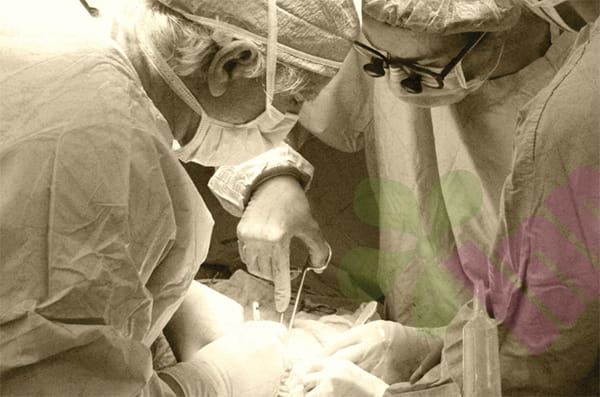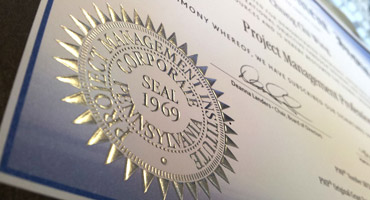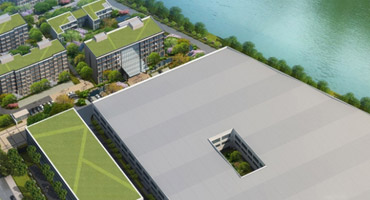In the field of vascular surgery, chronic ulcers of the lower limbs are like silent alarms, with arterial ulcers and venous ulcers accounting for more than 70% of cases. These two seemingly similar skin ulcers actually have completely different pathological mechanisms and treatment plans. Accurate identification is the key to developing an effective treatment plan.

Causes vary:
Arterial ulcer: It is an "ischemic injury " caused by lower extremity arterial lesions. Common causes include lower extremity arteriosclerosis obliterans, thromboangiitis obliterans, and vascular diabetic foot ulcers. When the arterial lumen is narrowed by more than 70% or a thrombus completely blocks the blood flow, the tissue will fall into a state of hypoxia. At this time, cell metabolism switches to anaerobic glycolysis, lactic acid accumulation causes severe pain, and eventually leads to tissue necrosis. Diabetes, hypertension, and smoking are the main risk factors. About 65% of arterial ulcer patients have arteriosclerosis. The main cause is severe stenosis or occlusion of the lower extremity arteries, which causes local blood supply insufficiency and necrosis, and ulcers. In severe cases, amputation is required.
Venous ulcer: It is the terminal manifestation of "venous hypertension", and its root cause lies in venous valve insufficiency or post-deep vein thrombosis syndrome. Under normal circumstances, the venous valve is like a one-way valve, ensuring the centripetal return of blood. When the valve is not fully closed, the venous blood flows back, resulting in increased venous pressure, increased capillary permeability, and plasma protein extravasation, causing tissue edema. Long-term venous hypertension can cause lipid sclerosis changes in the skin, and eventually form ulcers due to minor trauma or infection. Data show that the incidence of venous ulcers in workers who stand for a long time is 3.2 times that of the general population. These causes ultimately lead to lower limb venous congestion, long-term venous hypertension, skin nutritional disorders, skin ulcers, long-term non-healing, or repeated ulcers after healing. Long-term non-healing ulcers may also become cancerous.
Clinical identification features:
The pain pattern is the core clue to distinguish the two types of ulcers. Arterial ulcers are characterized by resting pain, which worsens at night or when the limbs are drooping, and can be relieved by lying flat and raising the affected limb. This pain is often described as knife-like or burning and is directly related to the degree of tissue ischemia. Venous ulcers are mainly characterized by distending pain, which worsens after standing or walking for a long time and is relieved after resting or raising the affected limb. The pain is relatively mild.
The appearance of the wound varies significantly. Arterial ulcers often occur on the extremities (feet, toes), and appear as perforated ulcers that reach deep into the bone, with neat edges, pale or charred bases, and minimal exudation. Accompanying physical signs provide important clues. Patients with arterial ulcers often experience nutritional changes such as "hair loss, thickened toenails, and thin and shiny skin", and the Buerger test is positive. Patients with venous ulcers often have manifestations of venous hypertension, such as "varicose veins, pigmentation, and eczematous dermatitis".
Different locations: venous ulcers usually occur from the lower 1/3 of the calf to the ankle, while arterial ulcers usually occur at the extremities, i.e., the feet and toes.
Symptoms vary: Venous ulcers are often accompanied by edema of the calf or ankle, which is mild in the morning and severe in the evening. The affected limbs feel sore and heavy after standing or walking for a long time, and are relieved after resting or raising the affected limbs. In addition, the skin of the calf may be accompanied by pigmentation, itchy skin, eczema, and other changes.
Therefore, patients with chronic wounds should not only focus on the treatment of the wound surface but, more importantly, pay attention to the causes of the chronic wounds. They need the guidance and help of professional doctors to successfully achieve ulcer healing and disease recovery!
For more information on Innomed®Elastic Bandage Self-Adhesive, refer to the Previous Articles. If you have customized needs, you are welcome to contact us; You Wholeheartedly. At longterm medical, we transform this data by Innovating and Developing Products that Make Life easier for those who need loving care.
Editor: kiki Jia

 English
English عربى
عربى Español
Español русский
русский 中文简体
中文简体








